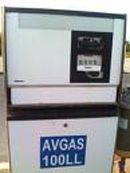
With 100LL threatened by environmental regulation, what do owners think should replace it? An unleaded 100-octane equivalent fuel is the most popular choice, according to a recent survey of more than 3100 AVweb readers. Moreover, many owners also want mogas as a second choice, offering some downside protection against escalating fuel prices that have already curtailed flying for many.
The survey, which began in late February, revealed that there’s not much support for lower-octane dedicated aviation fuels, such as 94UL, nor are owners particularly supportive of engine modifications that would make it possible for many aircraft engines to burn lower-octane fuel without detonating.
Of the 3151 readers who took the survey, 97 percent were pilots and 96 percent were based in the U.S. or Canada. AVweb also asked if readers owned airplanes that require 100-octane fuel and 86 percent of those who responded said they did, with 16 percent reporting that their airplanes were approved for lower-octane fuel. This is the mirror opposite of the accepted estimate that 30 percent of the fleet requires high-octane fuel while 70 percent can operate on lower-octane fuel, such as 91 AKI mogas, 80/87 or other aviation fuels. Judging by reader comments, the high response rate may be due to owners of high-performance aircraft believing they have more at stake if a replacement fuel isn’t found.
When asked which future fuel approach made the most sense, 51 percent said they favored a single, 100-octane drop-in replacement, 33 percent favored 100-octane, plus mogas as an option, 7 percent said they liked 94UL and another 7 percent thought a dual aviation fuel system such as 100-octane and 94-octane should be put in place. But the vast majority of readers recognized that dual fuel isn’t practical: “We need a drop in replacement for 100LL. There’s no way to have two separate fuels. The infrastructure can’t support it,” one reader told us. Not too surprisingly, owners whose airplanes don’t require 100-octane fuel chaff at the prospect of having to buy it just for the sake of having a single fuel and these owners tilt strongly toward mogas. But there’s also strong support for mogas on airports among those who need 100-octane. Nearly 30 percent of these owners said they wanted mogas available, either because they own a second airplane that can burn it or they’re looking forward to owning or flying an LSA.
But owners aren’t nave about the difficulty of finding reliable mogas supplies not blended with ethanol, a periodic problem for some of the 100-plus airports that carry it now. We asked our survey takers if they believed it was likely mogas would be part of the fuel solution. Twenty one percent considered it likely, but nearly half — 48 percent — told us it was not likely at all; a non-starter.
We also asked readers if they would be willing to modify their engines to burn a lower-octane fuel, such as 94UL. There’s evidently not much sentiment for this. Only 8 percent said they would very likely to modify their airplanes, while another 25 percent said they would be somewhat likely. More than a quarter said they would be unlikely or simply wouldn’t not buys mods of any kind to accommodate lower-octane gas.
When asked about which mods they would consider, the most popular choice was an electronic magneto or ignition system that would provide detonation margin. Readers reacted far less warmly to operating at reduced power (9 percent), installing low-compression pistons (8%) or installing a full-up FADEC system (14 percent).
Judging by our e-mail, many owners are concerned enough about the lack of clarity in the fuel market to forgo upgrades or new aircraft purchases, at least those that require 100-octane fuel. Our survey put some numbers on this. Exactly one third — 33 percent — said they wouldn’t delay purchases over worries about fuel, but 31 percent said they were on the fence and 22 percent said they definitely won’t do any upgrades until they know what’s going to happen to 100LL.
“I fly a Beech Bonanza with an IO-470N TCM. This engine requires 100LL. I am concerned that the $70,000 for the new engine and airframe upgrades may become useless if 100LL is pulled from the market,” one survey participant told us.
Last summer, the EPA said it has no timeline for additional regulation on lead emissions and if this was supposed to allay concerns among owners, it may have little effect. A quarter of the survey respondents said the EPA pronouncement made them more confident in future fuel supplies, but 48 percent said it made them less confident. Said one reader: “The intrusion of EPA into the life of the free enterprise system, with their onerous growth and stifling regulations will continue … to the destruction of innovation in aviation. Regulation limits the progress to a real solution.”
A strong majority of survey takers told us the industry shouldn’t panic over a fuel solution, but that it needs to be solved soon. Nearly an additional third (28 percent) said the industry needs to be more aggressive in finding the replacement fuel.


































